LCD Large Panel Shipments – July FinalAfter seeing August results for panel prices above, the fact that large panel sales increased in July by 1.5% seems a bit unspectacular. While we would expect the impact of the August drop in large panel prices to be felt the greatest in China, as it has been averaging 48.7% of industry large panel sales, both Taiwan (26.5% avg.) and South Korea (19.7%) will also feel some of the effects, and any slowdown in shipments of panel prices for monitors and notebooks will exacerbate the impact. July saw overall large panel shipments down 1.4% m/m but was offset by a 2.9% increase in ASP (m/m) which is a bit off from typical July shipments, which average (5 year) +1.0%. August is typically a stronger month, averaging +4.8% in m/m shipments and a 5.6% increase in large panel sales, but the impact of the TV panel price drop will impact overall industry sales, regardless of shipments, unless there is some anomaly that pushes shipments out of normal range for August. As July is a ‘rear-view mirror’ month, given what we know about August, the charts below will tell the story.
0 Comments
Panel Prices – “Elevator Out of Service” |
AuthorWe publish daily notes to clients. We archive selected notes here, please contact us at: [email protected] for detail or subscription information. Archives
May 2025
|
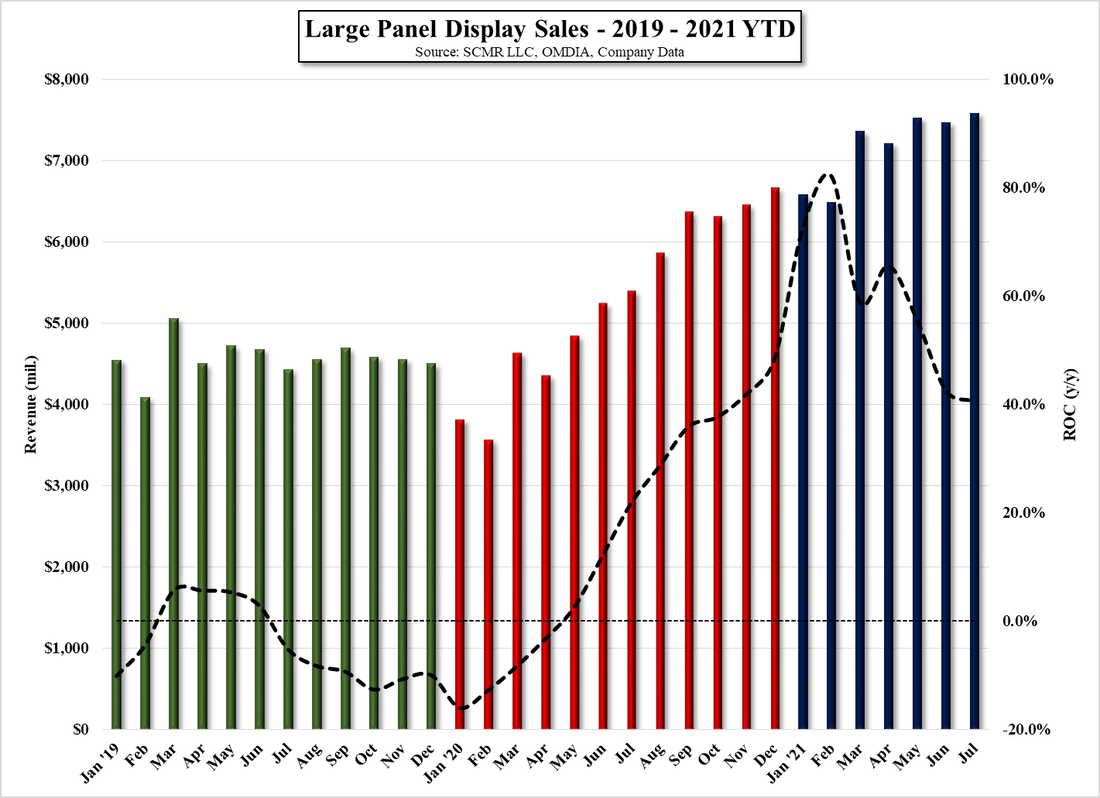
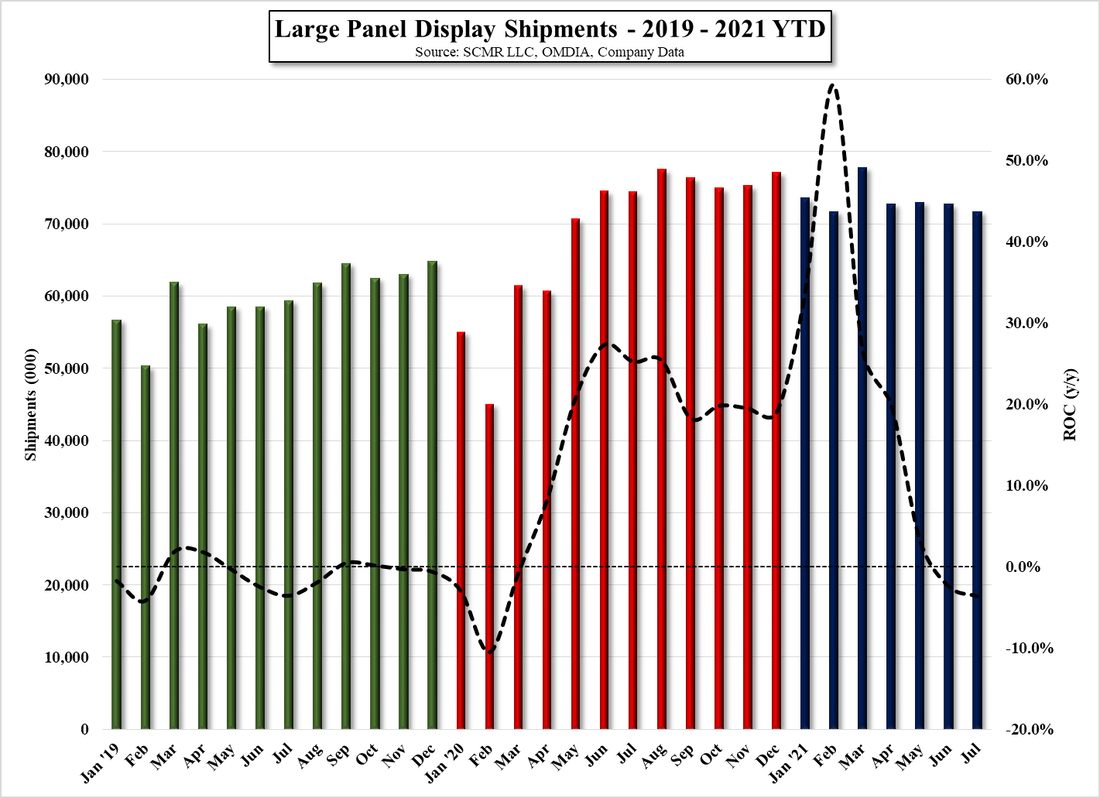
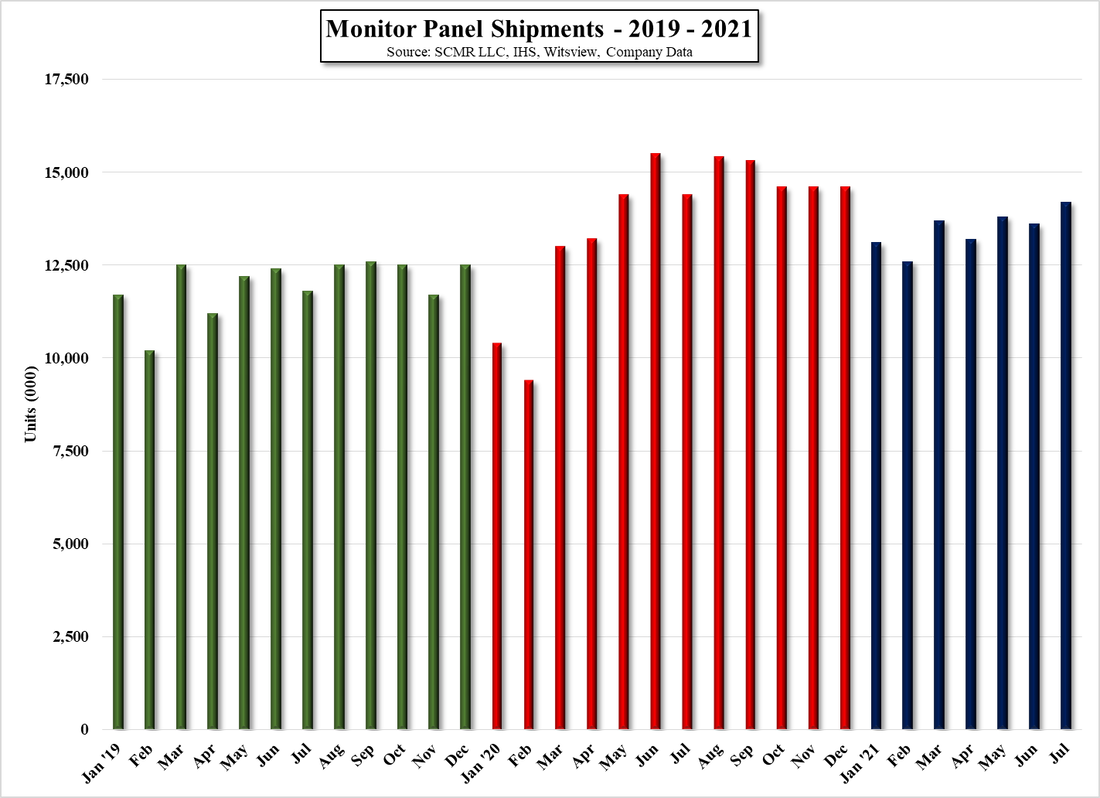
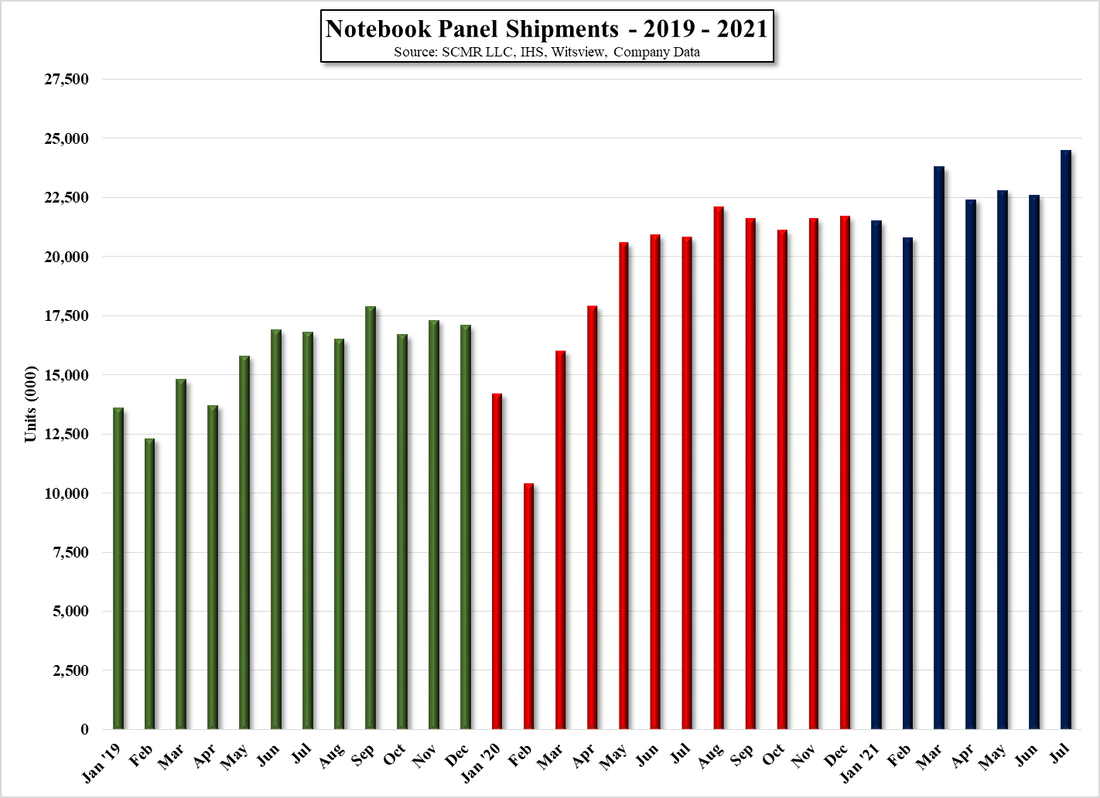
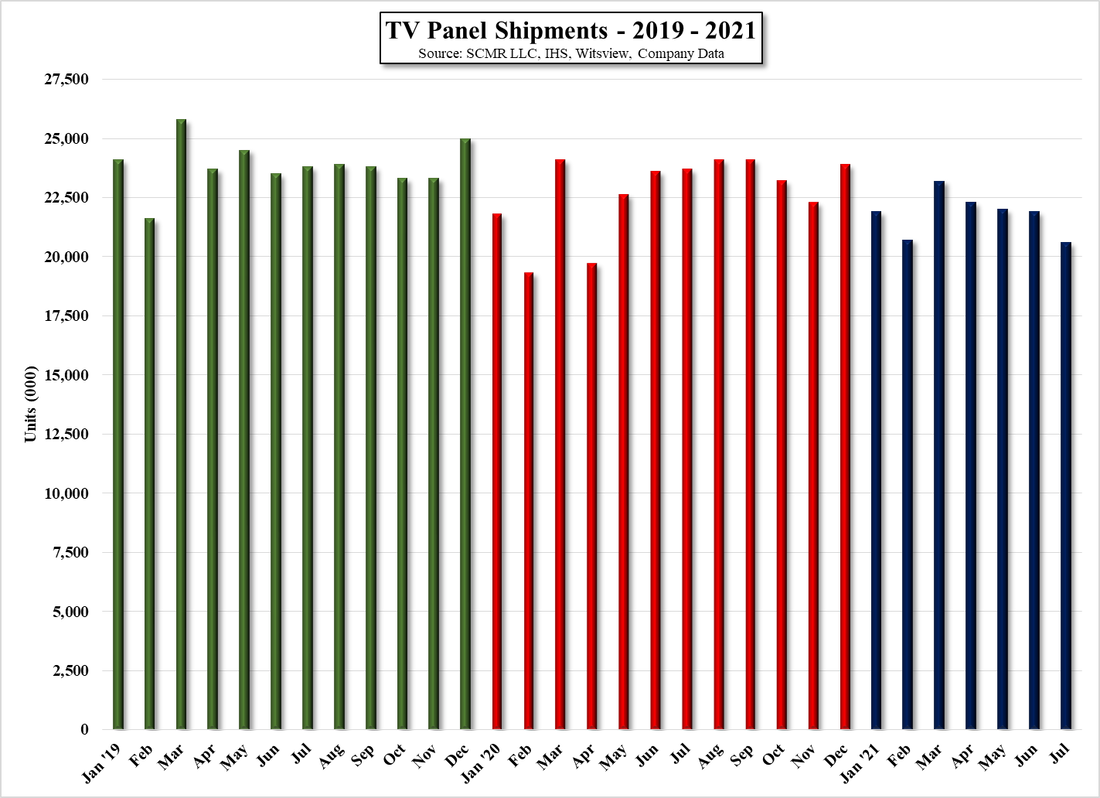

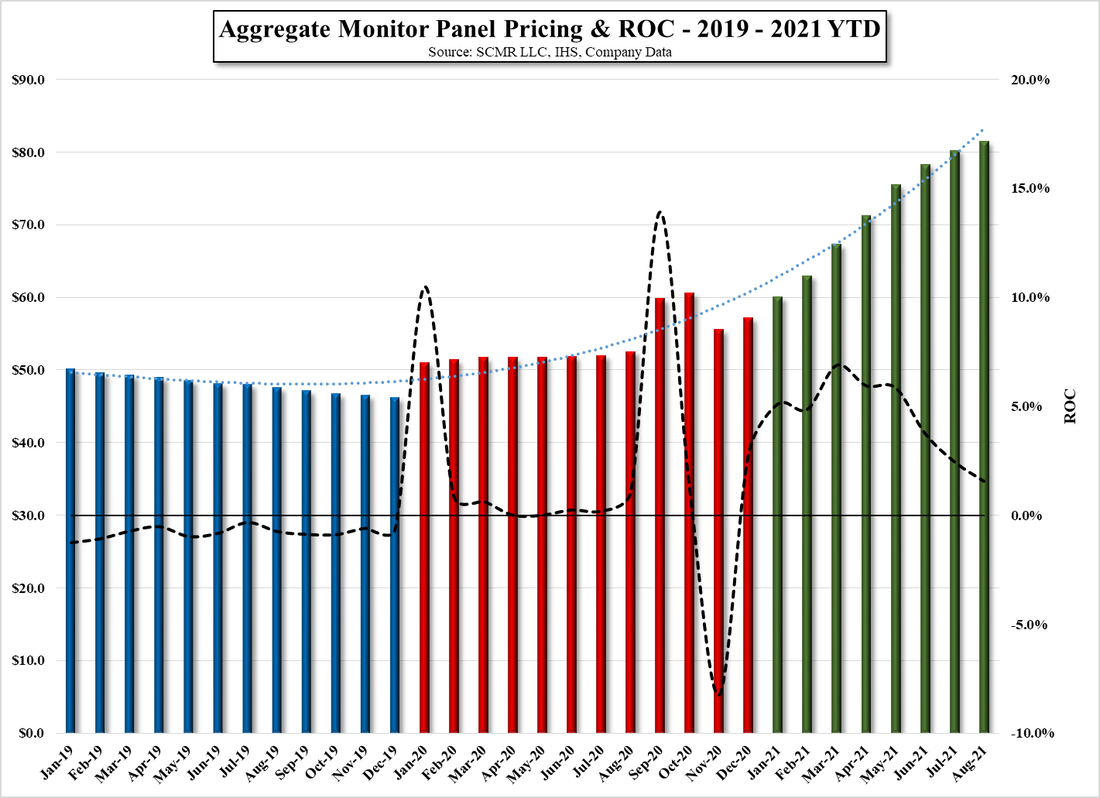
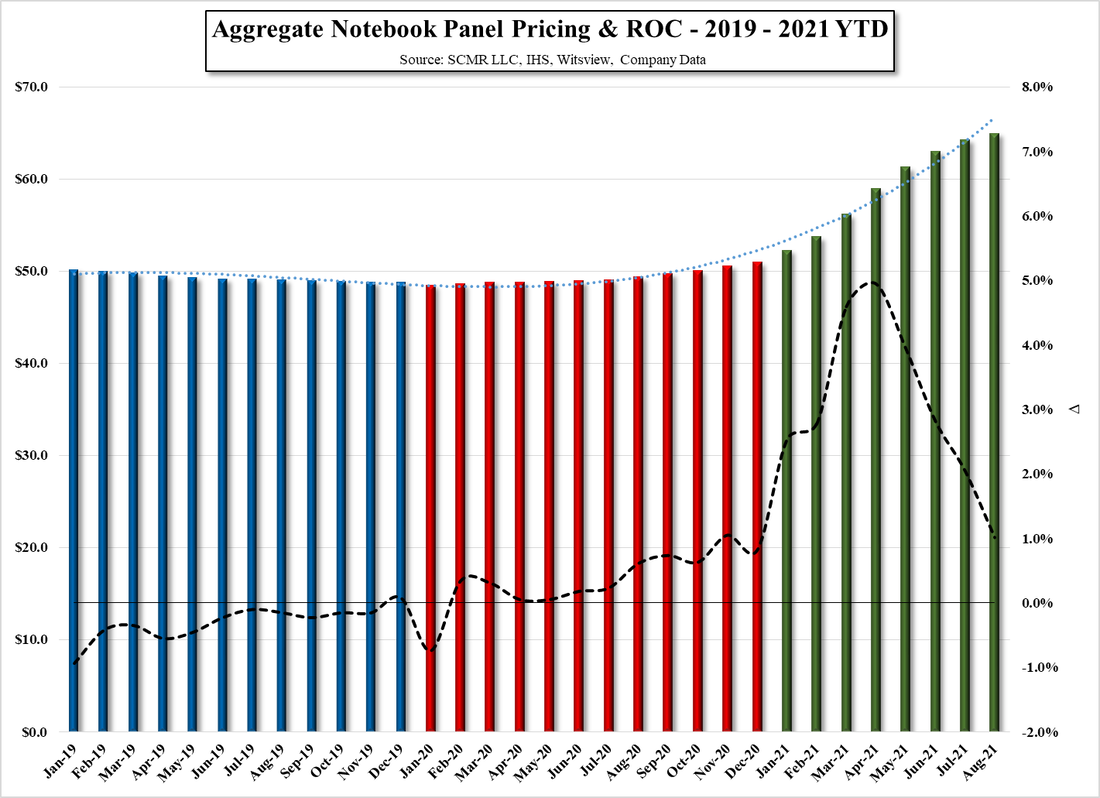
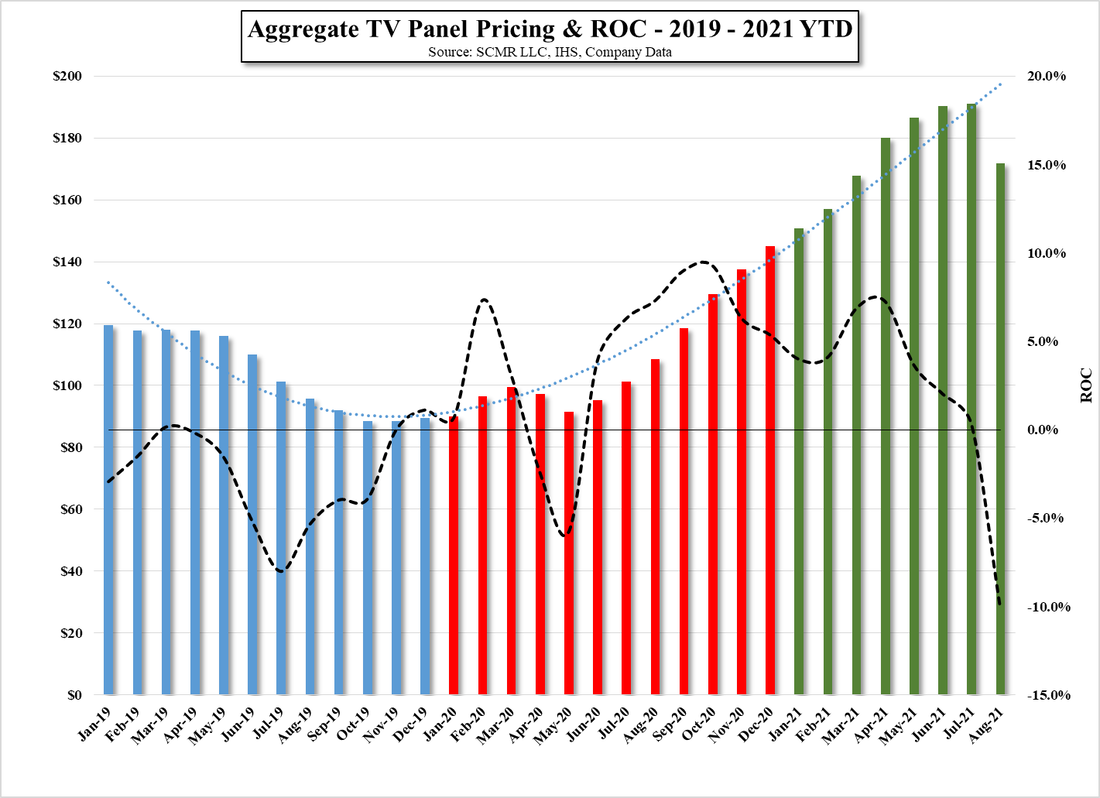
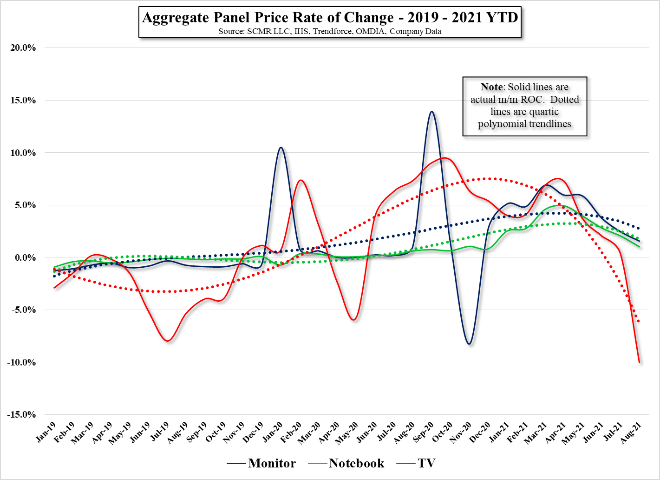
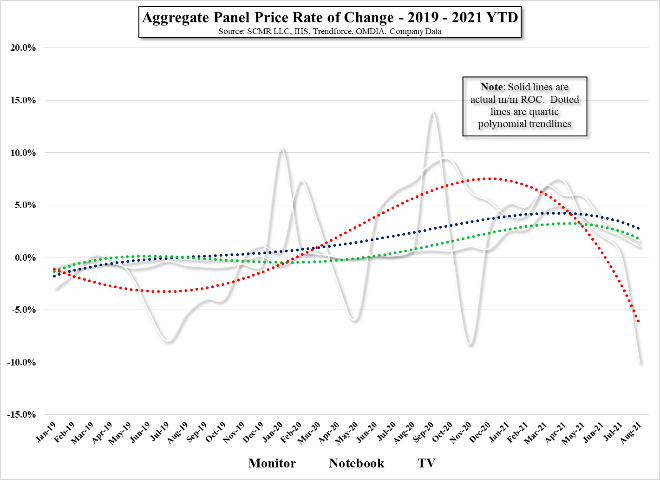
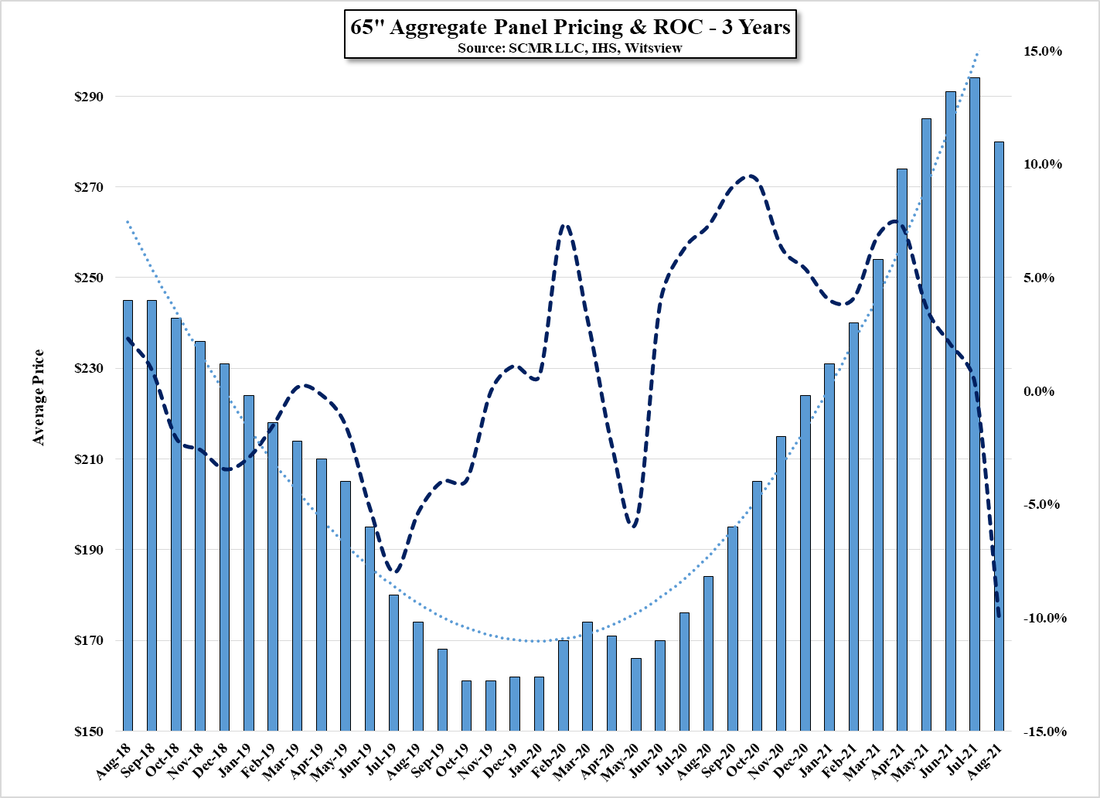
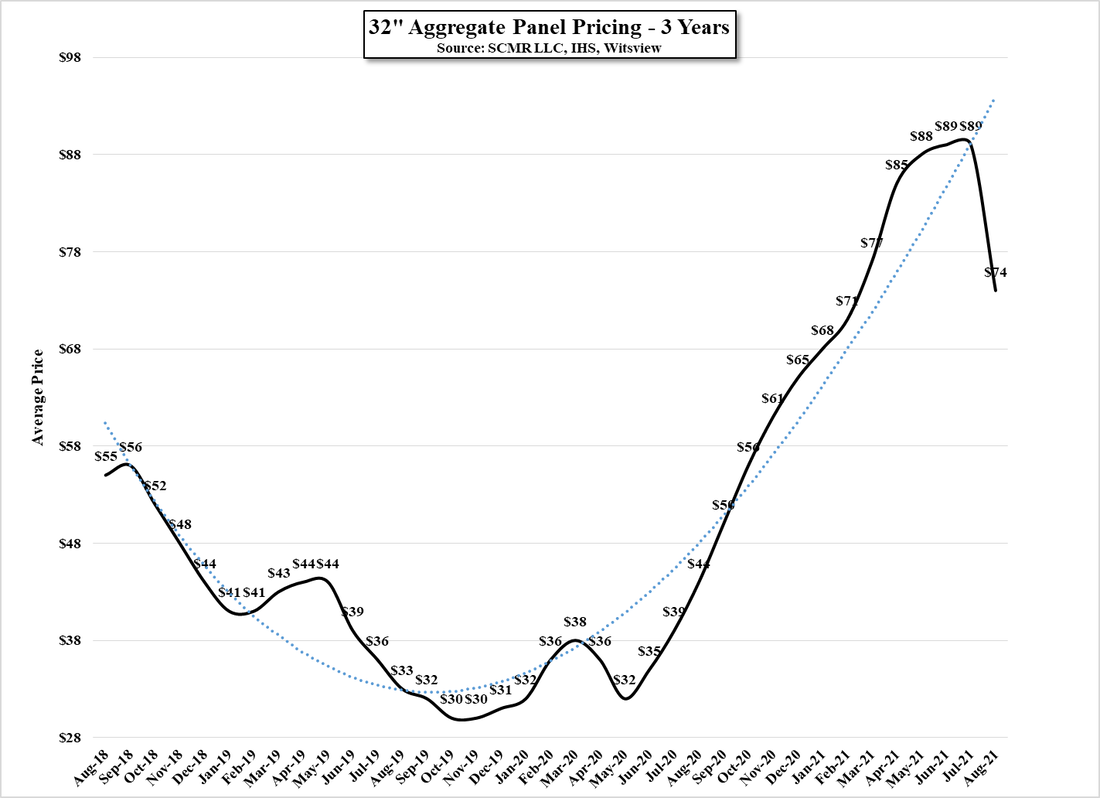
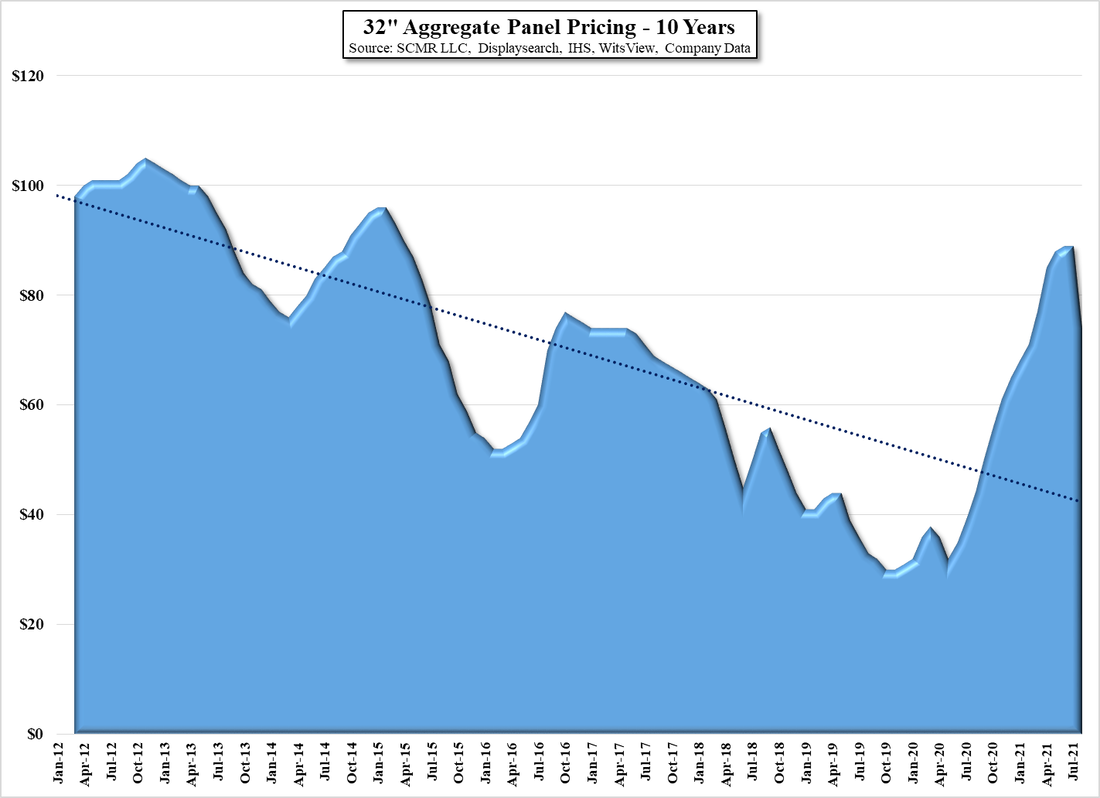
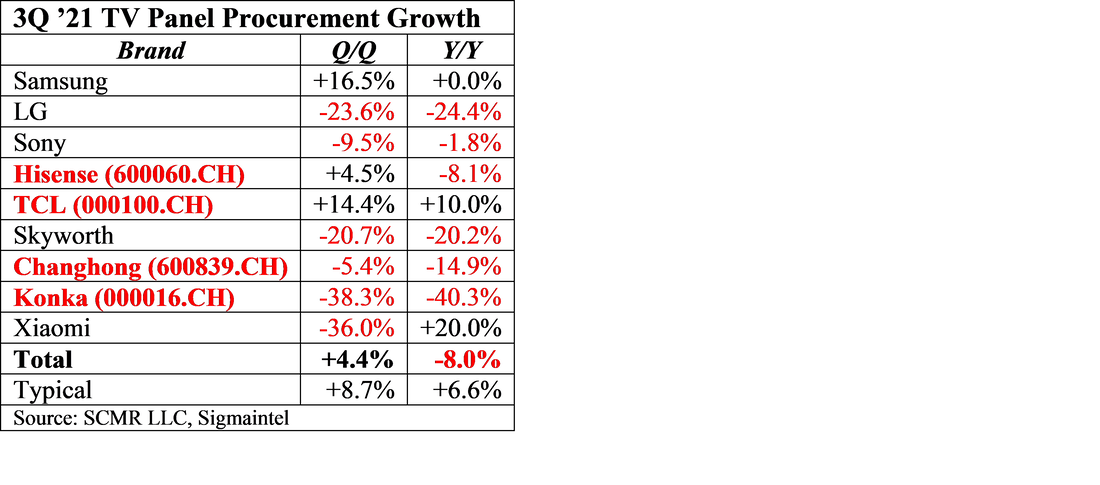



 RSS Feed
RSS Feed